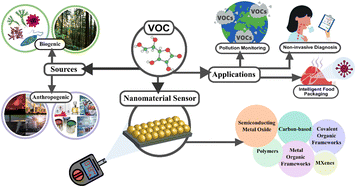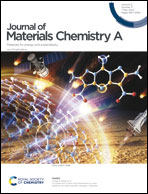Nanomaterial-based VOC sensing applications and a deep dive into their developmental trends
Abstract
Volatile organic compounds (VOCs) are emitted as gases from solids and liquids. A large number of objects around us are always emitting VOCs into the atmosphere. VOC emission sources are classified into biogenic or anthropogenic. VOCs also cause health issues and other environmental problems. Their presence in any given situation points towards particular conclusions. As a result, VOC sensing is extremely important and can be applied to many fields of applications. This review highlights three major applications where sensors can be used, firstly in the detection and monitoring of harmful/polluting VOCs in the environment to ensure public safety; in detection of disease-specific VOCs for advancing the medical field by achieving non-invasive diagnostic procedures; lastly in the monitoring of VOCs emitted by food products, which can help in assessing the quality of food and implementing preventive measures to avoid food wastage. The mainstream VOC detection techniques such as gas chromatography paired with different detectors still leave much to be desired, despite their precise and accurate nature. Their limitations can be overcome by a new generation of sensors that use nanomaterials for sensing VOCs. The continuous advancement in nanotechnology has enabled the development of sensors through functionalization, composite formation and structural engineering, which has immensely improved sensing performances. In combination with interdisciplinary techniques and emerging technologies, the advent of a new generation of VOC sensors is right on the horizon.

- This article is part of the themed collection: Journal of Materials Chemistry A Recent Review Articles


 Please wait while we load your content...
Please wait while we load your content...